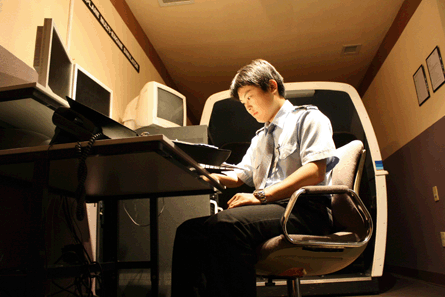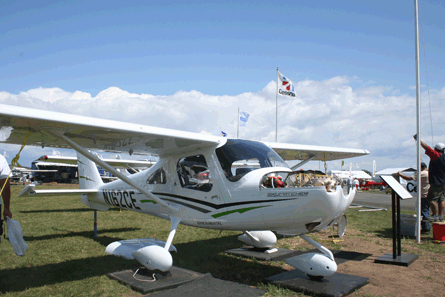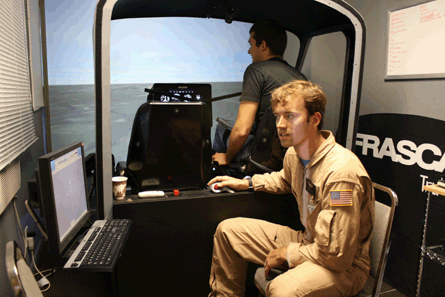Remember the worldwide pilot shortage? What was a frustration for airlines and flight schools alike is now a fond memory. Pilots are laid off, there are few jobs for new graduates and potential students are finding loans hard to come by. Flight schools are squeezed in the middle - in some countries more than in others - and there is widespread reliance on the traditional hills and valleys of aviation to bring better times.
"In a robust economy, our instructor pilot force would turn over at the 20-30% level. In the current market it is not turning over at all," says Jerry Kidrick, director of the flight department at the Prescott, Arizona campus of Embry-Riddle Aeronautical University.
 |
|---|
© Jeffrey Decker |
LURED AWAY
Just two years ago academies offered bonuses and benefits to keep instructors from being lured away by airlines with hiring requirements as low as 250 flight hours. Today, he says, "some of the instructors with more experience and training are staying around, so the quality of our instruction and safety are seeing a positive effect".
Poaching of students and instructors by schools offering incentive packages is also taking place. The positive side is a small one, however, with shrinking enrolment affecting the bottom line. "We have a workforce that we have associated with the number [of students] we have expected to get in here. Those numbers are off and we certainly have to look at our workforce," says Kidrick. The unknowns in the economy mean the available training programmes also need re-evaluating, he adds.
This downturn is the worst seen at Portland, Oregon-based Hillsboro Aviation since the 11 September terrorist attacks, says owner Max Lyons. What had been annual growth of 20% is now a slight dip. "2009 will be the first year in 16 we haven't grown," he says.
His training, charter and helicopter operating business remains strong, with diverse missions, Lyons says, pointing to their firefighting and sightseeing clients. There are fewer new fixed-wing and helicopter sales, he adds, although used sales are slightly up.
Diversity in clients pays off, too. "People come here from 70 countries," he says. "We have long-term relationships throughout Asia. I started the Japanese flight training programme - Taiwan, South Korea, China. What's important about that diverse market is that one country's aviation industry will slow down, but they almost never slow down at the same time. That's happening with this recession as well."
Europe is strong, he says, and China sends students to Oregon as well for fixed-wing and helicopter training.
Airlines in China continue to show robustness strong enough to surprise many, but that is not the case in neighbouring India, says Prithvi Sharma, general manager of charter and administration for Orient Flight School in Pondicherry. "Scenarios are very bleak as of now. Only people who are really enthusiastic about aviation and flying are getting into training," he says. Where two years ago his school had about 100 students enrolled, today there are about 20.
For many Indian students, the stark scenario became personal after some sold their homes and took major loans to finance training in the USA. "A lot of students have gone abroad and done their training and now have come back and are without jobs," Sharma says.
 |
|---|
© Jeffrey Decker |
More than 5,000 commercial pilot licence holders are unemployed in India - the same number of new pilots the domestic industry would have needed by 2010 to meet demand, he says, adding that many pilots are now taking commercial flight instructor courses.
They cannot all be hired, however, and Indian airlines, in common with may others around the world, are freezing recruitment. Sharma says indirect effects of this recession are making matters worse. "The information technology market has been hit hard. This is a major industry in India, and a lot of people have stopped travelling. They have their meetings held over telephone and email and other telecommunications. It's not going to the place and having the meeting one on one."
When distant travel is needed, he says, "people generally prefer the overnight train, or travelling by road". As important as an aviation infrastructure is to such a large country, Sharma believes the government's role could be improved. "The government is not doing much," he says, pointing to fuel tariffs and the import duty for private aircraft. "For non-commercial aircraft, there is an exemption from duty, but not for private aircraft."
In addition, the cost of fuel is rising and varies by region. "It's not controlled. It's different all over India," he says.
The distance of major new airports from city centres also deters people from flying. Such airports are still being built, he adds, which is as sound an investment today as it was two years ago. "By the time the next turnaround takes place we'll have the infrastructure in place. It's a cycle, so hopefully in the next couple of years it should improve," Sharma says.
In Germany, the training picture is much better. "There is no difference to the number of students two years ago," says Jens Küper, administrator of the German Flight Academy in Mönchengladbach. "The current global economic crisis has no influence on the training of pilots." He adds: "For students who finish their training now, it is very difficult to get a job. But when they started, the job market was very good. So it is difficult starting the training at the right time."
The right time takes most advantage of the familiar cycle of recession and rebound, he suggests. "Many candidates hope for a better situation when they have completed their training. We think that now is a good time to start training."
Enrolment has been hit harder in Spain, says Bob Anderson, director of business development for Flight Training Europe, based in Jerez. "Like all fixed-base operators, we all talk to each other, and we're all down about a third. It's very parochial. It's all country-focused," he says. No more than 80 students will enroll this year, Anderson predicts.
BREAD AND BUTTER
"Our bread and butter is the full JAR integrated course," he says, but over the past 18 months pilots out of ab initio training and some instructing have not had a place eager to take them. "Several major airlines have gone bust and that has put many well-qualified pilots back in the marketplace," he says.
"We deal primarily with airlines that are based in the UK. At this moment I don't believe there is one airline in the UK that is hiring new pilots. All of our graduates from the first part of 2009 are still looking for new jobs," Anderson adds.
Some airlines enter contracts with Flight Training Europe. BA CityFlyer has told him it will not need new pilots this year, "but some of the other airlines have given us some very positive signs". Government jobs continue to need filling, but are not plentiful enough to offset this hammering from the recession.
 |
|---|
© Jeffrey Decker |
The downturn squeezes on both ends, with the credit crunch keeping banks and student loan businesses from signing students up for tuition loans. "We can't just drag people through the door who can't afford to pay," Anderson asserts.
Several lending institutions have taken flight schools off their approved school lists. That is what KeyBank did with potential students of Silver State Helicopters, which declared bankruptcy in February 2008. What was the largest helicopter pilot academy the world had ever seen, with schools in 17 states, is still a horror story for students who owe loans for $80,000 tuition.
The school's founder, who has yet to resurface to his once-public life, claimed a lack of lending availability forced the bankruptcy. Several state attorneys general allege that the massive company was an unsustainable fraudulent investment scheme and hundreds of students are fighting through the courts.
In the established training world, says Anderson, financing's role cannot be underestimated. "It's not really rocket science. It's just a matter of euros. People either do or don't have the money." The same is true for the airlines and schools, he adds.
"The only thing that keeps an airline alive is its ability to use cash. The same applies to flight training, Anderson says. His school has reserves to weather the storm.
Like Anderson, Küper sees a light in this tunnel. "There were repeatedly bad times in the past. In the end, the airline industry will grow," he says.
The question Anderson hears is whether the rebound will occur in 2010 or 2011. If the recession lasts years longer it would be a real "doomsday scenario", he believes. "If the downturn continues another two or three years, I think a lot of training academies will go out of business."
But Flight Training Europe and every other school are being positive by preparing to take advantage of what they believe will be future overwhelming demand.
"The only way to get anything positive out of this current downturn is to prepare the business for the imminent upturn," Anderson says. When it does, he points out, the pilot shortage will be quickly on its heels.
Source: Flight International























